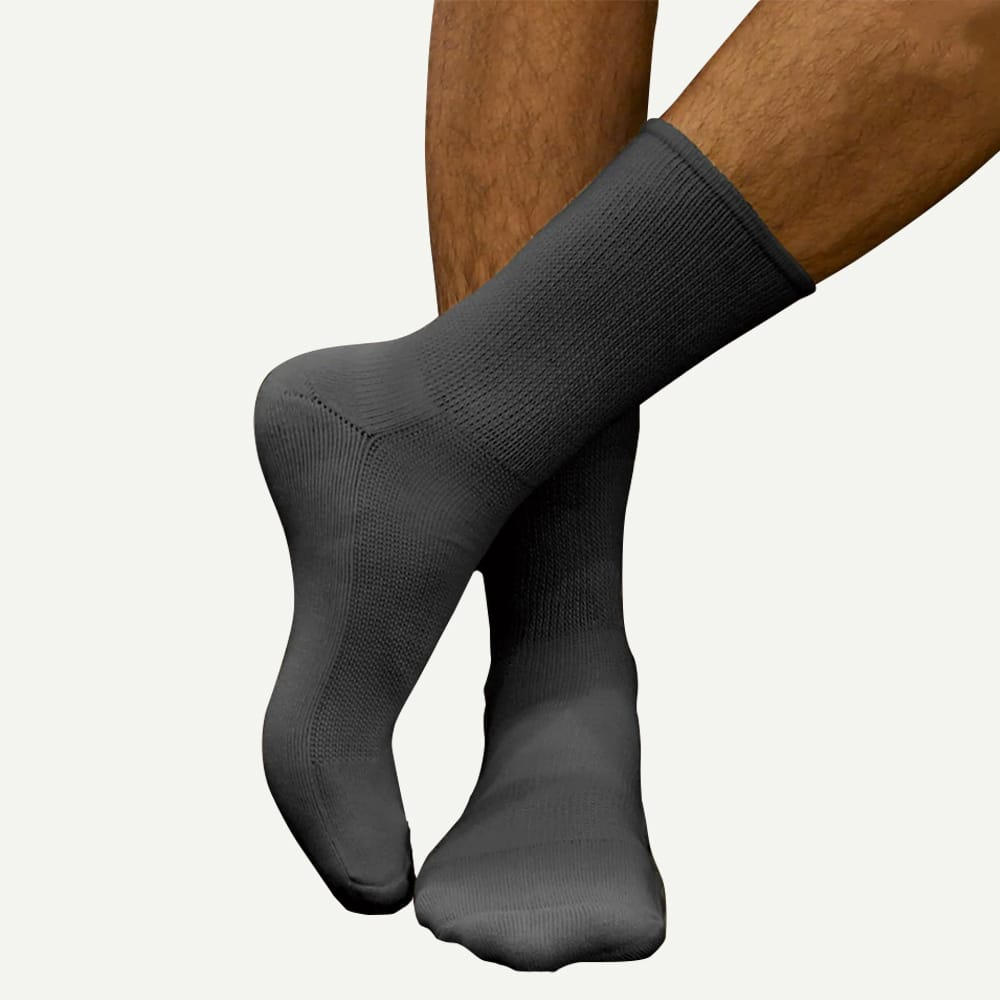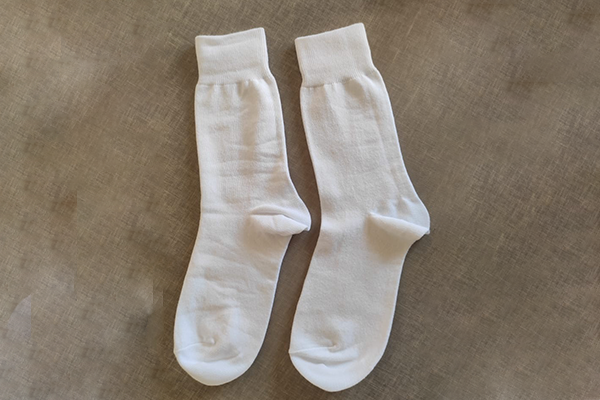
The structure of socks has come a long way from its humble beginnings, and today, retailers have the opportunity to offer socks that are not only functional but also customised to meet specific consumer preferences. As a custom sock manufacturer, Texcyle understands the need to change for something better. In this blog, we’ll delve into the essential structural elements that define the ideal sock and how Texcyle integrates these features to produce custom socks that are both practical and stylish.
1. Elastic Ribs: Enhanced Stretch and Support

Then: Traditional socks had limited elasticity and basic support, often leading to discomfort and poor fit over time. Socks were prone to losing shape, which resulted in slippage during wear.
Now: Modern socks incorporate elastic ribs, which are primarily found in sports socks, providing enhanced stretch and support in key areas such as the cuff, ankle, and arch. Elastic ribs, often in 2/1 or 3/1 rib patterns, ensure that the socks fit snugly, improve blood circulation, and enhance performance during physical activities. In Texcyle’s custom socks, we use these elastic ribs to create compression zones that aid circulation, prevent slippage, and offer a more supportive fit.
2. Cuff Structure: Balancing Comfort and Functionality

Then: In older sock designs, the cuff was either too tight or too loose, leading to discomfort or socks that didn’t stay in place.
Now: The cuff, or top part of the sock, plays a key role in the sock’s comfort, with various cuff structures impacting how it feels on the leg.The cuff structure has evolved to strike a perfect balance between comfort and functionality. A well-constructed cuff prevents socks from falling off during use while offering support to the ankle. For casual socks, a looser cuff is preferable for a comfortable, relaxed fit. However, sports socks often require a tighter cuff with added elasticity to prevent the sock from slipping during physical activity.
3. Footbed and Cushioning: Flat vs. Terry

Then: Socks were typically uniform in thickness, with little to no cushioning, which often resulted in discomfort and poor durability, especially in high-impact areas like the heel and toe.
Now: Socks are not flat anymore,though if the consumers want it for daily wear then flat socks can be an option.Whereas, terry loops, which are common in sports socks, offer moisture absorption, shock absorption, and insulation, making them perfect for athletic or winter wear. Texcyle offers a variety of terry options for different parts of the sock, from full-foot terry,half terry, micro terry or arbitrary terry to selective cushioning in areas like the heel and toe. These custom footbed options allow for enhanced comfort and support, ideal for both casual and athletic consumers.
4. Mesh Structure: Ventilation and Style

Then: Ventilation in socks was often an afterthought, leading to poor breathability and discomfort, especially during physical activity.
Now: Modern sock designs integrate mesh structures, particularly in sports socks, to promote ventilation and keep feet cool and dry. The mesh panels are strategically placed on high-sweat areas like the instep and ankle to increase airflow. At Texcyle, we offer socks with customizable mesh patterns, allowing retailers to create unique designs that are both functional and aesthetically pleasing.
5. Seamless Toe and Heel Construction: Comfort Meets Durability

Then: Sock seams, especially at the toe and heel, were often bulky and uncomfortable, causing irritation and blisters.
Now: The seamless toe and heel construction has become standard in high-quality socks. Texcyle’s socks are designed with a smooth, seamless toe box that reduces friction and enhances comfort. The heel structure is also reinforced to improve durability, ensuring that the socks last longer, even with frequent wear.
This modern seamless design is especially important for retailers targeting consumers who value comfort, such as those seeking socks for all-day wear or athletic performance. Texcyle’s customizable seamless designs provide an added layer of comfort and durability that consumers will appreciate.
Socks aren’t a one-size-fits-all product; each pair should have its own identity that resonates with the wearer. Texcyle is the destination for discovering more about custom socks and delivering better options to your customers. Contact us today to explore how our customizable socks can elevate your brand!

















